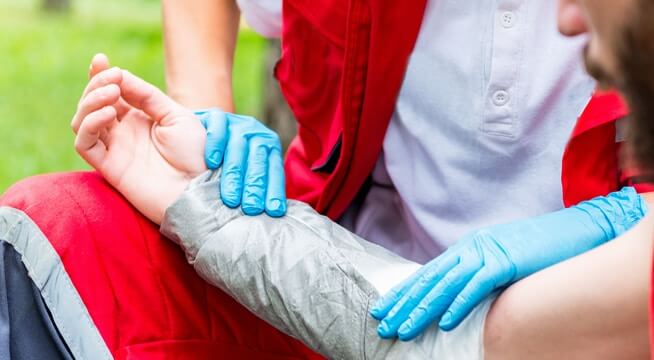
Getting burned is always an excruciating experience. The shock, pain, and scarring are all blatant reminders that the body has just experienced trauma. But, not all burns are the same. Minor ones can heal with a topical ointment. However, the more serious the burn, the higher the risk of infection and having it affect your overall health. What are the types of burns that require medical attention? How can you learn to recognize symptoms? And, if you were relatively lucky enough to only get a minor one, what’s the best way to treat it?
Degrees of Skin Burns
The skin has three layers: epidermis, dermis, and hypodermis. The epidermis is the outermost layer and serves as protection to the body. The dermis is right under the epidermis, and it contains hair follicles and sweat glands. The hypodermis is the innermost layer, and it contains fat and tissue connecting the skin to the muscles and bones.
There are three degrees of burns — first, second, and third-degree. They range in severity from minor to significant skin damage, with third-degree burns being the most dangerous. It’s also important to note that there are several ways of burning your skin — open flames, touching a hot surface, chemical burns (from chemicals or detergents), cold burns (frostbite), sunburns, and friction burns. They all can cause damage to your skin.
First-Degree Burns
These types of burns cause minimal skin damage. They only affect the epidermis and heal within two weeks, without leaving any scars. Signs include pain, redness, and minor inflammation. As the burn heals, you may also notice peeling skin.
Second-Degree Burns
These types of burns include damage to the epidermis and dermis. They also cause the skin to blister. Since the blisters can pop open, they are more prone to infection. They usually take within three weeks to heal and — while there’s no scarring — you may notice a difference in skin pigmentation at the site of the wound.
Third-Degree Burns
These are the most severe types of burns — affecting every layer of the skin, all the way to the hypodermis. And, while they are the most dangerous, it’s possible that the person experiencing it may not feel as much pain as with other types of burns, due to nerve damage. Signs include a waxy, white color, charred skin, or a leathery texture. They can take a significant time to heal, and typically leave scars.
Signs You Should Go To the ER Immediately
You should never attempt to treat a third-degree burn on your own. Even if you feel no pain, call 911. Failing to seek immediate medical attention can result in a long list of complications — such as infections, blood loss, dehydration, sepsis, tetanus, muscle contractions, damage to your nervous system, and going into shock.
In addition, there are circumstances that require medical attention on an emergency basis, regardless of the type of burn. These include:
- The burn is on your face, hands, feet, or on a joint
- The burn was caused by an electric shock or a chemical
- There’s pus oozing from the burn
- The pain gets worse with time
- The burn is larger than three inches
- Change in the thickness of the burn
- Foul odor
- Fever
How to Treat Minor Burns
First-degree burns can be treated at home. To promote healing quicker, use home remedies as soon as possible. These include submerging the burn in cool water for several minutes, applying a topical anesthetic cream or antibiotic ointment, and covering the burn with gauze. If the pain lasts for an extended period of time, take an over-the-counter painkiller.
There are some forms of relief that you should avoid. Don’t apply ice to your burn, because it may worsen the damage, and don’t clean it up with cotton balls, since its fibers can stick to the wound — increasing the risk of infection.
24-Hour Emergency Room Services in Colorado Springs and Texas
If you or a loved one have a medical emergency, we can provide the care you need. If you have questions or need immediate treatment, your nearest Complete Care location is ready to help, no matter the time of day or night. We offer a variety of services to help you and your family in your time of need. No appointments are necessary.
Find the Complete Care location nearest you.
